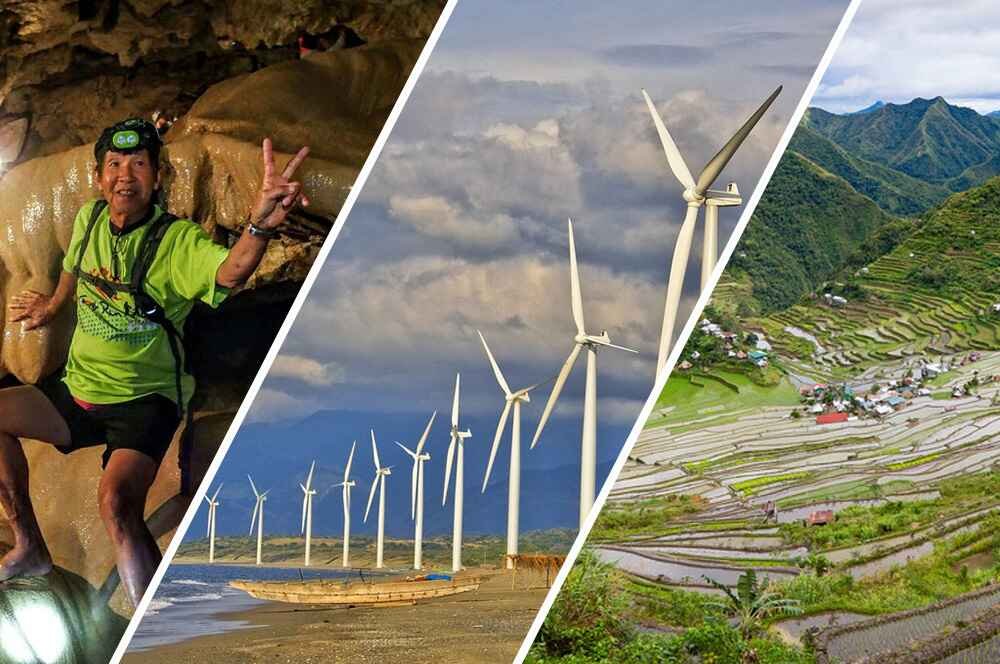Explore Sagada
Sagada is one of the most visited tourist attractions in the Philippines especially for those who love trekking, spelunking, rappelling, and rock climbing. Its mountainous regions are perfect for these kinds of activities, but this is not all that Sagada has to offer. This is also a serene and solemn place that one can go to when the stresses at work and the frustrations of city life seem too much.
Sagada Travel and Tour Packages
3 Days 2 Nights Sagada Packages

3D2N explore Sagada Budget Tour Package (without private transfers)

3D3N explore Sagada Tour Package (private transfers w/ Banaue & Baguio)
4 Days 3 Nights Sagada Packages

4D3N explore Sagada Budget Tour Package (without private transfers)

4D4N explore Sagada Tour Package (private transfers w/ Banaue & Baguio)

4D3N explore Banaue – Sagada Ultimate Adventure Trek Budget Package (No Land Transfers)

2D1N Banaue and Batad Rice Terraces + 2D1N Sagada Adventure Package with Baguio stopover (with private transfers)

4D3N explore Banaue – Sagada Ultimate Adventure Trek Package (with RT Manila Transfers)
Other Sagada Tour Packages

Ultimate North Luzon Adventure: 2D1N Banaue and Batad + 2D1N Sagada + 3D2N Ilocos (with private transfers)
Sagada Tourist Attractions
Sumaguing Cave
Sumaguing Cave has the largest chamber connecting all the 60 caves of the town. It is also known as the Big Cave. It is the most popular and most visited site in Sagada. Stalagmites and stalactites form inside the caves over millions of years and are truly a sight to behold. These formations in Sumaguing Cave are given different names based on their forms. Examples are pregnant woman, Mickey Mouse, rice terraces, and others. It is an evidence of untouched nature that we should keep and protect.
Lumiang Burial Cave
Lumiang Burial Cave, on the other hand, is known for the piled coffins of the early people buried inside it. These coffins can be found at the entrance to Lumiang Cave. After entering, it will lead you to a stiff, narrow, and difficult trail to its end, passing to Sumaguing Cave. The Lumiang to Sumaguing connection is best for more daring cavers.
Bokong Falls/Small Falls
Bokong Falls, though not as tall as Bomod-ok Falls, is still a worthy site to visit. It is 20 feet in height and is located only a short walk away from the town. There is a waterfall at the edge of the rice fields and is 17 feet deep, best for those who want to freshen up their itinerary.
Rice Terraces – Banga-an
The Rice Terraces are hailed as the “eighth wonder of the world.” They are carved out of the mountains by the ancient Igorots to maximize the farming space. ¬Every step is laboriously piled out of small rocks, creating a strong foundation of the rice lands. The rice terraces were built using advanced engineering techniques and skills to prevent soil erosion. It is indeed a remarkable proof of Filipino intelligence, and also hard work and creativity that leads to a greater value of tourism all over the world.
Echo Valley / Hanging Coffins
Echo Valley is the memorial cliff where the hanging coffins can be found. Most of the Sagada people prefer to bury their deceased in caves or hanging coffins rather than the ground because according to their beliefs, the higher the body is, the closest they are to heaven, and also to protect the bodies from natural disasters like earthquakes and floods.
Kiltepan Rice Terraces View Point Tower
Kiltepan Tower got its name from its three bounding barangays: Kilong, Tetep-An, and Antadao. It is definitely a must-see if you go to Sagada. The cool temperature while hiking to the top and the trail walled with pine trees will take away your tiredness especially when you reach its highest point and view the mountain ranges’ crests amidst floating white clouds.
St. Mary’s Episcopal Church
St. Mary’s Episcopal Church was built in 1904 by the American Missionaries for the people of Sagada to teach the indigenous tribes the Christian religion, and it has also functioned as an educational institution. It is still in operation, giving natives a quality education.
Sagada Pottery
Sagada Pottery is one of the shops where you can find Sagadan pottery and buy them as souvenirs. Each jar is carefully molded by hand, giving it a nice form and authentic sculpture.
Pottery has a major part in Sagadan culture. The ancient locals use earthen jars to do their rituals. They value those jars and they whisper a ritual before opening any of them. It is the showpiece of Sagada’s native culture, an art of their belief that will remain intact.

































